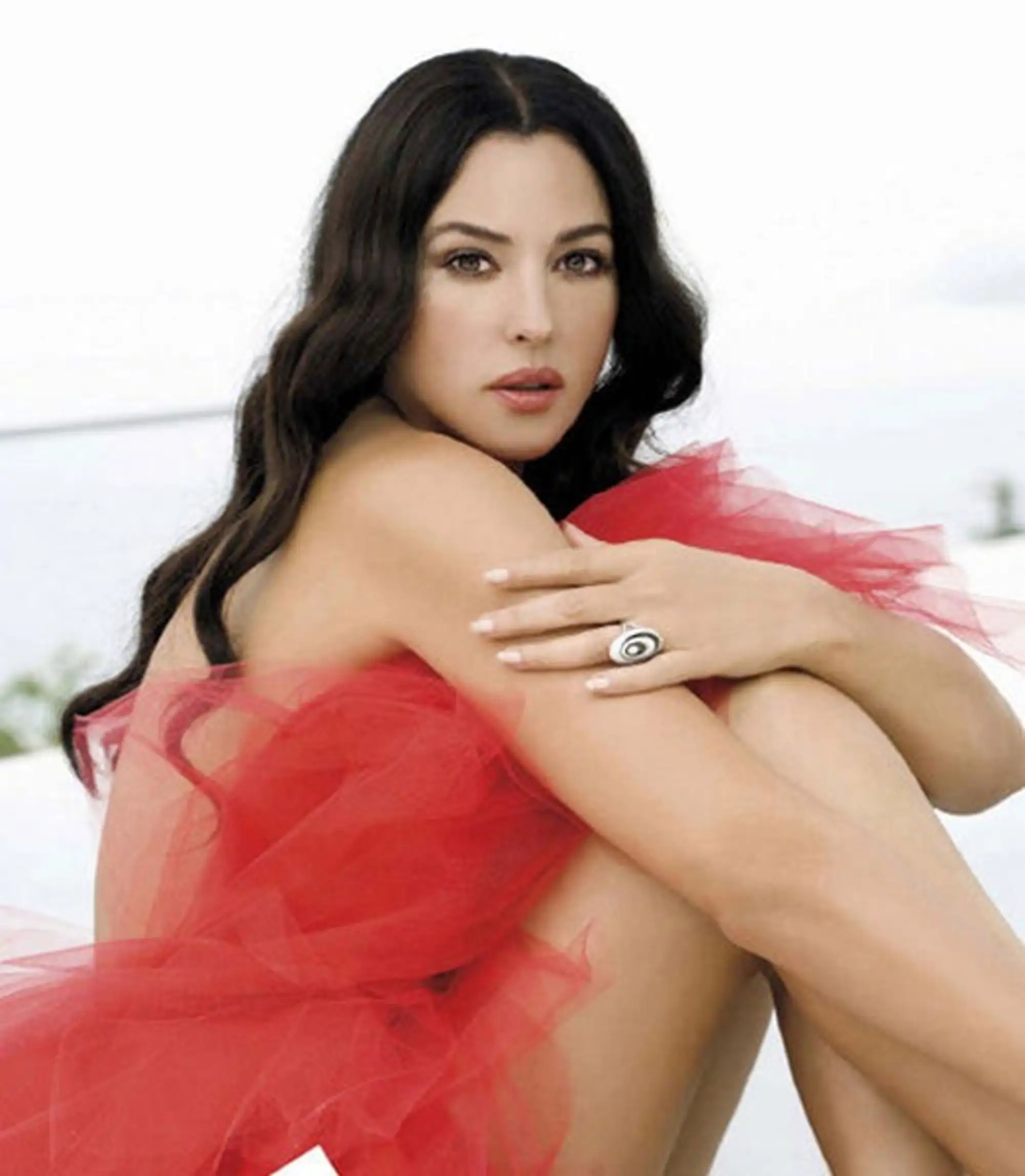Monica Bellucci—a name synonymous with cinematic charisma and Mediterranean mystique—may never have held a guitar or belted a chorus onstage. But in the opaque glow of rock ’n’ roll’s aesthetic, she stands tall as an unclear yet unmistakable muse. Her presence—both on screen and on red carpets—echoes the era when music and mystique intertwined in album art, fashion, and veiled rebellion.

From Runway to Rebel Icon
Bellucci began her ascent as a model in Milan, Paris, and New York in the late ’80s and early ’90s, quickly becoming the face of Dolce & Gabbana and Dior. Celebrities and designers alike described her look as raw elegance—instantly recognizable, eternally glamorous . Her work with iconic photographers like Helmut Newton and Richard Avedon further cemented her as a silent visual anthem—a perfect foil for the drama of rock album covers or the stylized worlds of music videos.
In this era, music saw titans like David Bowie, Kate Bush, and Florence + The Machine revel in theatricality. Bellucci’s aesthetic aligned: dark silk gowns, smoky eyes, red lips, and subtle attitude that whispered intensity rather than shouted it.

Roles That Resonate with Rock Drama
Her performance in Malèna (2000) turned her into a symphonic figure of cinematic longing. She navigated a world of longing looks, community scrutiny, and slow-burning magnetism—an emotional voltage mirrored in the haunting Morricone score
Blocks of her career carried the same tension: Irreversible (2002)’s unflinching trauma, The Matrix Reloaded (2003)’s sleek digital rebellion, and Spectre (2015)’s serene maturity as Bond’s Lucia Sciarra—all roles that harnessed Bellucci’s stoic intensity and intangible presence
That trajectory mirrors the path of many cult-rock carriers—coming in quietly, altering tone, aging cleverly, and never losing their edge.

Gothic Glamour on Red Carpets
Whether draped in vintage lace or satin couture, Bellucci’s public appearances channel gothic baroque energy—much like visual rock anthologies that marry bruised emotion with high fashion. Commentators note that Dolce & Gabbana often presented her as the embodiment of Italian ‘femme fatale,’ projecting wild yet poised femininity .
Her style choices—stern lines softened by mood lighting, minimal accessories with maximum narrative resonance—are the visual equivalent of atmospheric rock albums steeped in chiaroscuro.
The Power of Silence: Less Spoken, More Felt
Bellucci rarely screams—her work demands presence. In an interview about embodying opera legend Maria Callas on stage, she explained that the connection was less about vocal performance and more about soul resonance: “I felt I could get in touch with her soul”
In rock, legends like PJ Harvey, Nick Cave, or David Bowie mastered equilibrium between absence and intention—voice used like a brushstroke, never overpowering. Bellucci operates similarly—not loud, but unforgettable.

An Icon Shaped by Reinvention
Monica Bellucci’s career bridges continents and cultures. Fluent in Italian, French, and English, she effortlessly transitions between European arthouse films and Hollywood franchises
Her art—whether in cinema or photography—often invites parallel histories. Scholars describe her persona as “iconic” yet “anti‑iconic”: the kind of woman who can embody classic glamour or subvert it entirely—just like rock’s duality of spotlight allure and shadowy edges
The Bond with Tim Burton and Gothic Resonance
Her creative synergy with Tim Burton—most recently in Beetlejuice Beetlejuice—further entrenches her in rock-adjacent aesthetic mythos. Burton’s gothic fantasy palette, emphasis on outsider identity, and cinematic theatricality harmonize with Bellucci’s dark elegance
It’s the kind of imaginative overlap Rock often embodies—structured around emotional atmospheres, visual tension, and a defiant softness.

Culture Beyond Cinema: Activism & Legacy
Bellucci has repeatedly used her platform for advocacy—from supporting feminist causes to championing children’s rights and cultural diplomacy
Her refusal to conform to ageist expectations and repeated insistence on natural aging reflect rock’s spirit—as an art form where authenticity, resilience, and sincerity matter more than perfection .
The Soundless Song That Echoes
Monica Bellucci may never sing in a stadium, but she carries within her the essence of a setlist we never hear out loud—textures like velvet smoke, silence that vibrates, and glances that thrum with intention.
In the visual language of rock—from album covers and promo shoots to music videos steeped in chiaroscuro—she appears as muse incarnate. Her image haunts, lingers, inspires.

Why Bellucci Belongs as Rock’s Unofficial Muse
| Quality | Rock Aesthetic Parallel |
|---|---|
| Dark Elegance | Gothic album art, melancholic mood |
| Atmospheric Silence | Sparse lyrics, emotional even in stillness |
| Emotional Ambiguity | Lyrical complexity, duality in songwriting |
| Vintage Timelessness | Vinyl records, analog warmth in digital age |
| Transformation | Persona shifts, genre-crossing reinvention |

Final Reflection: When the Screen Mimics the Stage
Monica Bellucci doesn’t hit high notes—but she resonates. She doesn’t march across stadiums—but she steps into frames that feel like stages. She doesn’t belt choruses—but her presence sings.
She is rock in corporeal form—not in performance, but in posture; not in lyrics, but in linger; not in sound, but in aura.
In an era striving for authenticity, she delivers it. In a world craving mythic beauty with soul, she embodies it. And in a cultural moment haunted by stylized rebellion, she remains rock’s enduring, unseen muse.